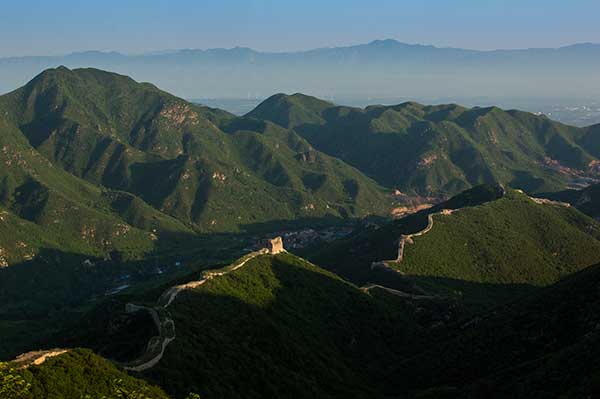Chenjiapu Valley's rugged wall exceeds expectations
 |
|
In the morning light, the Great Wall and the surrounding mountains become absolutely stunning.[Photo by Ian Callison/chinadaily.com.cn] |
As the sun crested the mountains to the east, the crumbling, twisting Wall was lit up by amber rays of light. What a reveal that was.
The Great Wall both exceeded and defied my expectations.
Instead of being the perfectly geometric landmark with precise brickwork, the Wall that I climbed was crumbling and deteriorating. The impossibly steep brick stairs were reduced to loose, gravelly rubble, and the parapets had long since tumbled over.
The unrestored sections of the Great Wall were so different than the images I had seen on TV and in pictures. But I loved it.
Walking on those sections of crumbling, dilapidated wall, I felt the history. It felt so authentic and so true; of course a centuries-old battlement is going to be weathered. The picture-perfect sections might be pretty, but they lack that feeling of genuine ancientness. This was a part of the wall that had faced earthquakes, several wars, and centuries of harsh weather, and it had the battle scars to prove it.
- Great Wall, 'most recognizable' Chinese cultural symbol
- Survey shows Great Wall 'most recognizable' Chinese cultural symbol
- Great Wall, bamboo top list of Chinese culture
- Regional Great Wall meeting held in Baotou
- Aerial view of Great Wall surrounded by mist in N China
- Great Wall re-emerges from N China reservoir














